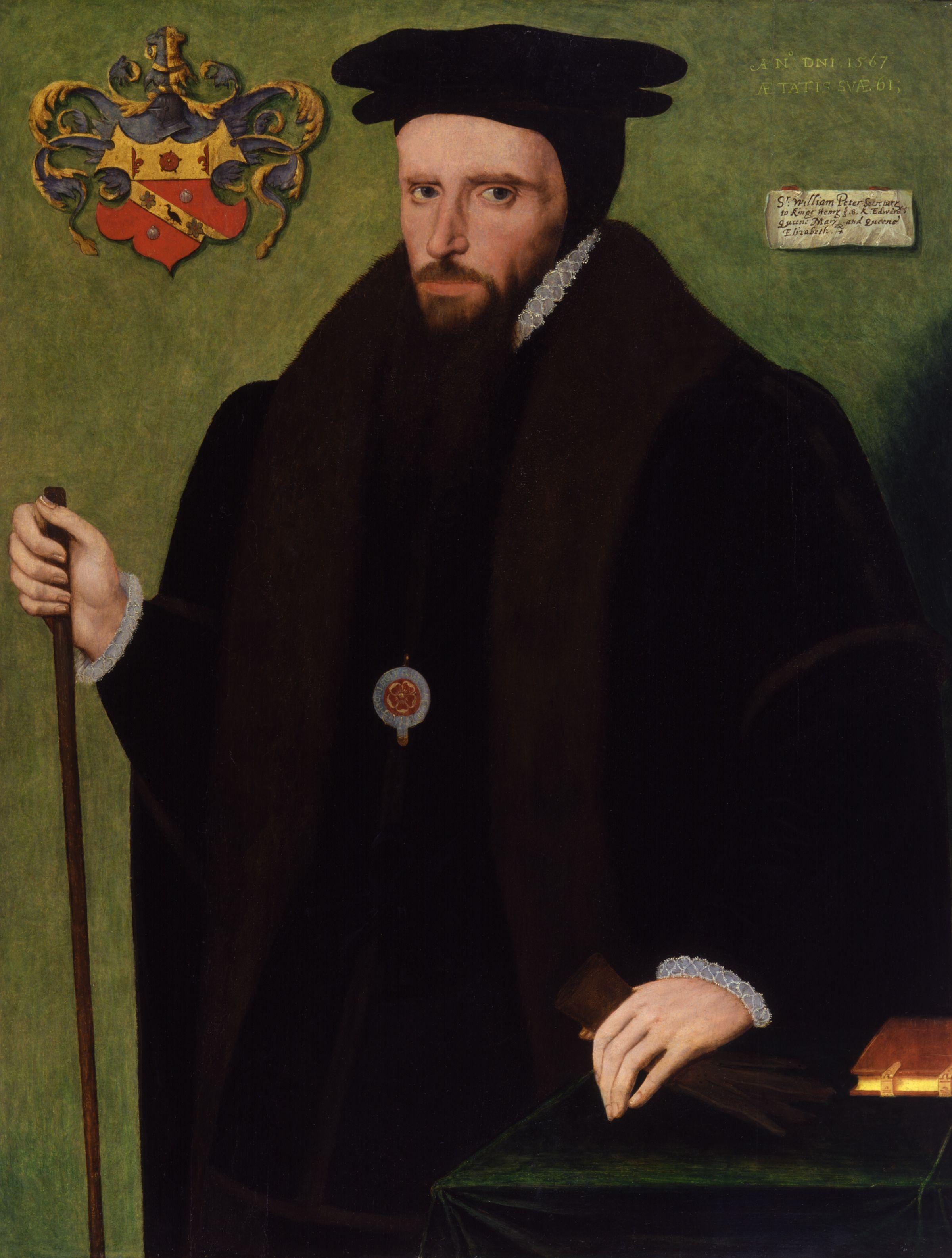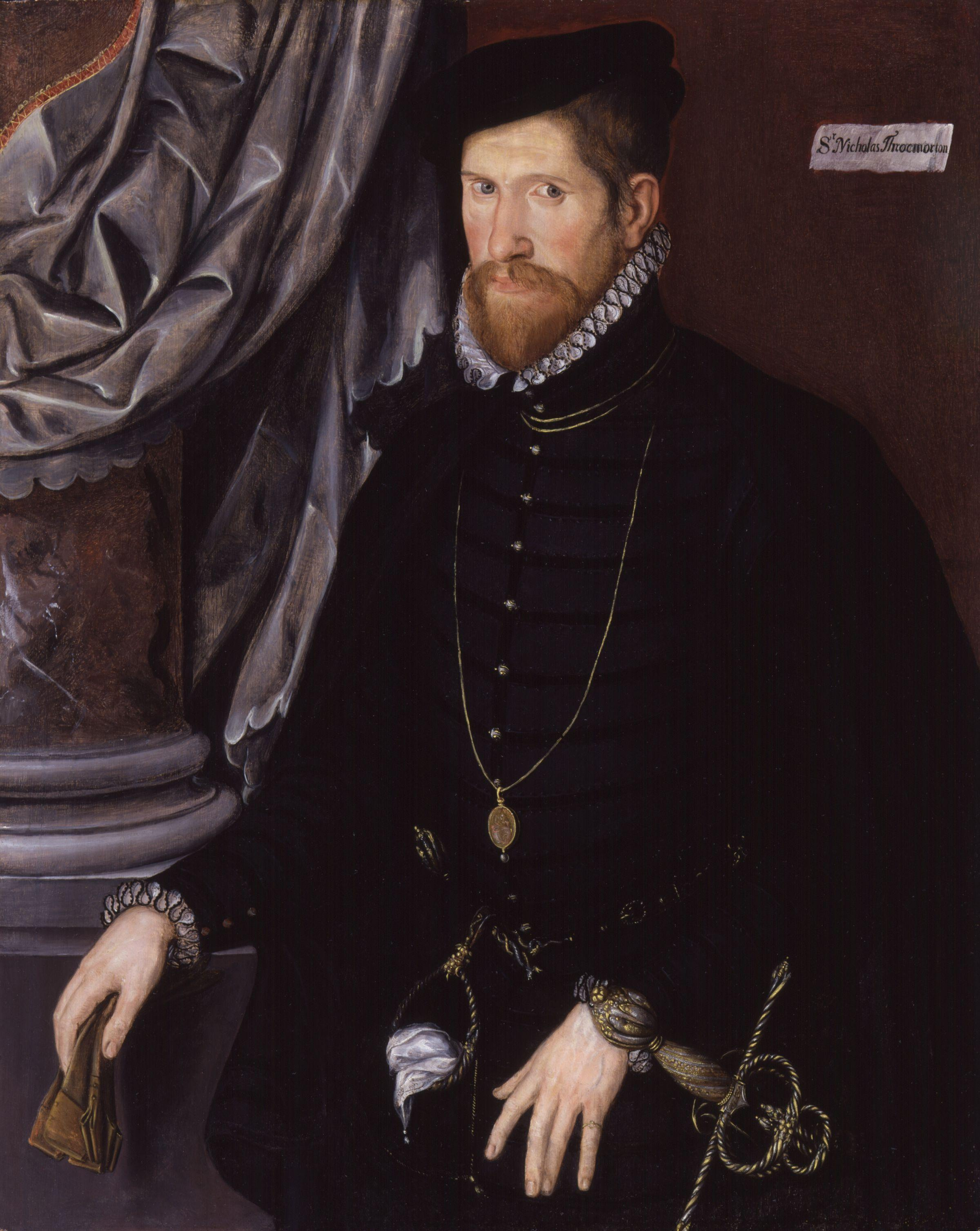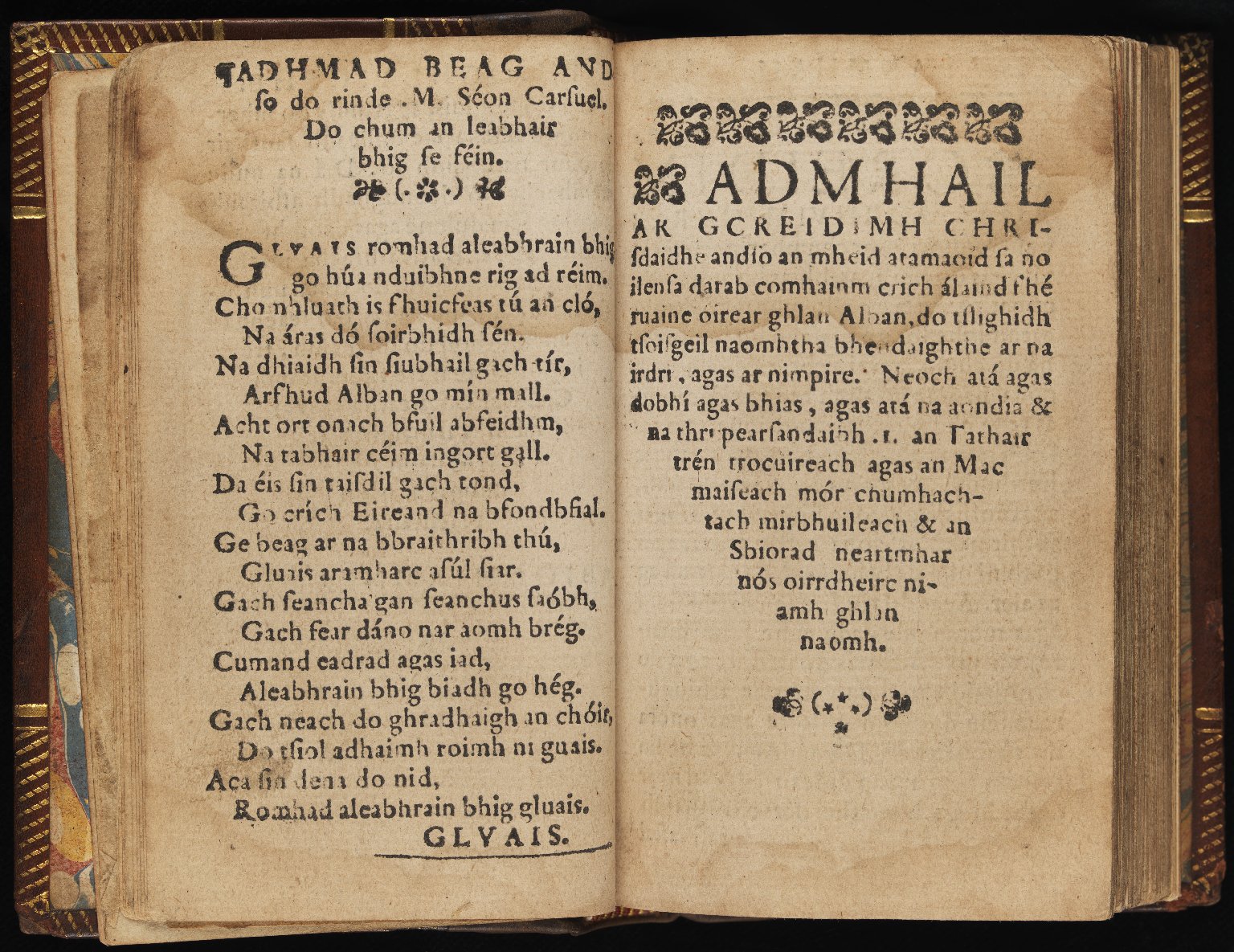|
Gregory Railton
Gregory Railton or Raylton (died 1561) was an English administrator and Clerk of the Signet. As a Protestant, Railton went into exile during the reign of Mary I of England. Career Gregory Railton was for many years Ralph Sadler's servant and "inward man". During the war known as the Rough Wooing, Railton was Treasurer of the Wars in the North (1549–1551). Railton was the accountant and courier of large sums of money for the English garrisons in Scotland. In August 1549, he wrote to the Earl of Rutland that he was unable to cross the flooded Tweed at Wark with his tired horses to bring money to the camp at Stichill. In 1552, Railton requested a licence to eat meat on fast days as he was ill from a "sore ague" contracted at Chichester. He attended the funeral of Edward VI with the other clerks including William Honnyng. Railton was a Marian exile in Frankfurt during Mary's reign. He wrote from Basel to William Petre, Mary's secretary, on 19 November 1554, apologising for his ... [...More Info...] [...Related Items...] OR: [Wikipedia] [Google] [Baidu] |
Clerk Of The Signet
The Clerks of the Signet were English officials who played an intermediate role in the passage of letters patent through the seals. For most of the history of the position, four clerks were in office simultaneously. Letters patent prepared by the Clerk of the Patents were engrossed at the Patent Office and then sent by the Secretary of State to receive the royal sign-manual. The duty of the Clerks of the Signet was to compare the signed bills with a transcript prepared by the Clerk of the Patents, and then to rewrite the transcript as a bill of privy signet, which was returned to the Secretary of State to be signed with that instrument. By the end of the seventeenth centuries, many of the Clerks of the Signet performed their work through deputies, with the office itself becoming a sinecure. The Treasury was given the authority to reduce the number of clerkships in 1832, abolishing one in 1833 and another in 1846. The two remaining posts were done away with in 1851. List of C ... [...More Info...] [...Related Items...] OR: [Wikipedia] [Google] [Baidu] |
William Petre
Sir William Petre (c. 1505 – 1572) (pronounced ''Peter'') was Secretary of State to three successive Tudor monarchs, namely Kings Henry VIII, Edward VI and Queen Mary I. He also deputised for the Secretary of State to Elizabeth I. Educated as a lawyer at the University of Oxford, he became a public servant, probably through the influence of the Boleyn family, one of whom, George Boleyn, he had tutored at Oxford and another of whom was Queen Anne Boleyn, second wife of King Henry VIII. He rose rapidly in the royal service and was knighted in 1543. Sir William Petre was adept at side-stepping the great religious controversies of the day; in January 1544 he was appointed Secretary of State. He navigated the ship of state through the rest of Henry's troubled reign, managing a smooth succession in 1547. He held high office throughout the reigns of Henry VIII, Edward VI, Mary I and Elizabeth I until, owing to ill health he retired a rich man to his manor of Ingatestone, in Ess ... [...More Info...] [...Related Items...] OR: [Wikipedia] [Google] [Baidu] |
James Croft
Sir James Croft PC (c.1518 – 4 September 1590) was an English politician, who was Lord Deputy of Ireland, and MP for Herefordshire in the Parliament of England. Life He was born the second but eldest surviving son of Sir Richard Croft of Croft Castle and his second wife Catherine Herbert, daughter of Sir Richard Herbert of Herefordshire, inheriting the estate on his father's death in 1562. He was elected eight times as knight of the shire (MP) for Herefordshire (1542, 1563, 1571, 1572,1584, 1586 and 1589) and knighted in 1547. During the Anglo-Scottish war of the Rough Wooing, Sir James was made commander of Haddington after James Wilford was captured in 1549. He was appointed lord deputy of Ireland on 23 May 1551. There he effected little beyond gaining for himself the reputation of a conciliatory disposition. On 21 December 1551, he wrote from Kilmainham to his former enemy Mary of Guise in Scotland, negotiating an exchange of hostages;"Consydering the peaxe betwext the k ... [...More Info...] [...Related Items...] OR: [Wikipedia] [Google] [Baidu] |
James Hamilton, 3rd Earl Of Arran
James Hamilton, 3rd Earl of Arran (1537–1609) was a Scottish nobleman and soldier who opposed the French-dominated regency during the Scottish Reformation. He was the eldest son of James Hamilton, Duke of Châtellerault, sometime regent of Scotland. He was of royal descent, and at times was third or fourth in succession to the Scottish crown; several royal marriages were proposed for him, but he ultimately never married. He went to France with Mary, Queen of Scots, where he commanded the Scots Guards. After returning to Scotland, he became a leader of the Protestant party against Mary and her French supporters. However, he went insane in 1562 and was confined for the rest of his life. Birth and origins James Hamilton may have been born in 1537 or 1538, another source suggests a date in 1532. His place of birth probably was Hamilton, Lanarkshire. He was the eldest son of James Hamilton and his wife Lady Margaret Douglas. His father was the 2nd Earl of Arran and was create ... [...More Info...] [...Related Items...] OR: [Wikipedia] [Google] [Baidu] |
Thomas Randolph (ambassador)
Thomas Randolph (1523–1590) was an English ambassador serving Elizabeth I of England. Most of his professional life he spent in Scotland at the courts of Mary, Queen of Scots, and her son James VI. While in Scotland, he was embroiled in marriage projects and several upheavals. In 1568-1569 he was sent on a special embassy to Russia, visiting the court of Ivan the Terrible. Randolph was also a Member of Parliament: for New Romney in 1558, Maidstone 1584, 1586 and 1589, Grantham 1559 and St Ives 1558 and 1572. Exile in France Thomas Randolph was born in 1523, the son of Avery Randolph of Badlesmere, Kent and Anne Gainsford (NOT the lady-in-waiting to Anne Boleyn). He entered Christ Church, Oxford at the time of its foundation, and graduated B.A. in October 1545, and B.C.L. in 1548. Shortly afterwards he became a public notary; and in 1549 he was made principal of Broadgates Hall (now Pembroke College), Oxford. He continued there until 1553, when the Protestant persecutions un ... [...More Info...] [...Related Items...] OR: [Wikipedia] [Google] [Baidu] |
Nicholas Throckmorton
Sir Nicholas Throckmorton (or Throgmorton; c. 1515/151612 February 1571) was an English diplomat and politician, who was an ambassador to France and later Scotland, and played a key role in the relationship between Elizabeth I of England and Mary, Queen of Scots. Early years Nicholas Throckmorton was the fourth of eight sons of Sir George Throckmorton of Coughton Court, near Alcester in Warwickshire and Katherine, daughter of Nicholas Vaux, 1st Baron Vaux of Harrowden and Elizabeth FitzHugh, the former Lady Parr. Nicholas was an uncle of the conspirator Francis Throckmorton.Douglas Richardson, Kimball G. Everingham. ''Magna Carta ancestry: a study in colonial and medieval families'', p. 639. He was a member of the household of Henry FitzRoy, Duke of Richmond and Somerset, and was brought up in the households of members of the Parr family, including that of his cousin Katherine Parr, the last queen consort of Henry VIII. He became acquainted with young Lady Elizab ... [...More Info...] [...Related Items...] OR: [Wikipedia] [Google] [Baidu] |
Jane Dawson
Jane Elizabeth Anne Dawson is a British academic and historian. Her specialism is early modern history within the British Isles and the Protestant reformation. Dawson is Professor Emerita of Reformation history at the University of Edinburgh and has previously served as a lecturer and honorary lecturer in modern history at the University of St Andrews. Career Dawson completed her BA and PhD in History at the University of Durham. In 1977 she became the first Glenfiddich Fellow in Scottish History at the University of St Andrews. In 1979 Dawson began a postgraduate teaching qualification at the University of Dundee and Dundee College for Education. Following this, Dawson took on a temporary post as teacher of history at Bell Baxter High School in Cupar, Fife. In 1982, Dawson entered a number of tutoring and lecturing positions within Scottish and Modern History within the University of St Andrews and from 1990 to 1992 held the position of honorary lecturer. She remai ... [...More Info...] [...Related Items...] OR: [Wikipedia] [Google] [Baidu] |
Lords Of The Congregation
The Lords of the Congregation (), originally styling themselves the Faithful, were a group of Protestant Scottish nobles who in the mid-16th century favoured a reformation of the Catholic church according to Protestant principles and a Scottish-English alliance. The Confederate Lords were nobles who opposed Mary, Queen of Scots, after she married the Earl of Bothwell. Historical events In December 1557 a group of Scottish lords opposed the marriage of Mary, Queen of Scots to the Dauphin of France (who became King Francis II of France from 1559 to 1560). The group signed the "First Band" or Covenant to work to make Scotland Protestant. The initial members were the Earl of Argyll, his brother Colin Campbell, the Earl of Glencairn, the Earl of Morton, and John Erskine of Dun, though others, such as William Douglas of Whittinghame quickly followed. Following religious riots in Perth, the Lords gained support and provided military help to John Knox in opposing the troops of ... [...More Info...] [...Related Items...] OR: [Wikipedia] [Google] [Baidu] |
Duke Of Châtellerault
Duke of Châtellerault () is a French noble title that has been created several times, originally in the Peerage of France in 1515. It takes its name from Châtellerault, in the Vienne region. The first title was created for François de Bourbon-Montpensier, a younger son of Gilbert, Comte de Montpensier, who was created Viscount of Châtellerault (''Vicomte de Châtellerault'') in February 1514. He received the duchy-peerage of Châtellerault in 1515, but was killed the same year, being succeeded by his brother Charles, ''jure uxoris'' Duke of Bourbon and Auvergne. This title was confiscated in 1527 after the Duke, who was Constable of France, betrayed the King by allying himself with the Emperor Charles V. The duchies of Châtellerault and Bourbon were then conferred on Louise of Savoy, the mother of King Francis I, but the latter title became extinct in 1530 when she ceded the territory of the duchy to Louis de Bourbon, Prince de la Roche-sur-Yon and later also Duc de Mo ... [...More Info...] [...Related Items...] OR: [Wikipedia] [Google] [Baidu] |
John Knox
John Knox ( – 24 November 1572) was a Scottish minister, Reformed theologian, and writer who was a leader of the country's Reformation. He was the founder of the Church of Scotland. Born in Giffordgate, a street in Haddington, East Lothian, Knox is believed to have been educated at the University of St Andrews and worked as a notary-priest. Influenced by early church reformers such as George Wishart, he joined the movement to reform the Scottish Church. He was caught up in the and political events that involved the murder of Cardinal David Beaton in 1546 and the intervention of the regent Mary of Guise. He was taken prisoner by French forces the following year and exiled to England on his release in 1549. While in exile, Knox was licensed to work in the Church of England, where he rose in the ranks to serve King Edward VI of England as a royal chaplain. He exerted a reforming influence on the text of the ''Book of Common Prayer''. In England, he met and married hi ... [...More Info...] [...Related Items...] OR: [Wikipedia] [Google] [Baidu] |
Joseph Stevenson
Joseph Stevenson (27 November 1806 – 8 February 1895) was an English Church of England and later Catholic priest, archivist and editor of historical texts. Early life Joseph Stevenson was born on 27 November 1806 in Berwick-on-Tweed, the eldest son of Robert Stevenson, surgeon, and his wife, Elizabeth Wilson. His parents were Presbyterians. Growing up, he occasionally accompanied an uncle on smuggling expeditions across the border. He was educated first at Witton-le-Wear (County Durham), and then at Durham School, under James Raine; where he was usually near the bottom of his class and at one time kept a loaded pistol among his effects which went off in the hands of a servant with dramatic although not deadly consequences. Afterwards he studied Latin and Greek at the University of Glasgow but made little progress and eventually returned to Berwick to pursue a vocation with the Church of Scotland. Career Moving to London, Stevenson found work in 1831 at the British Museum ... [...More Info...] [...Related Items...] OR: [Wikipedia] [Google] [Baidu] |
Scottish Reformation
The Scottish Reformation was the process whereby Kingdom of Scotland, Scotland broke away from the Catholic Church, and established the Protestant Church of Scotland. It forms part of the wider European 16th-century Protestant Reformation. From the first half of the 16th century, Scottish scholars and religious leaders were influenced by the teachings of the Protestant reformer, Martin Luther. In 1560, a group of Scottish nobles known as the Lords of the Congregation gained control of government. Under their guidance, the Scottish Reformation Parliament passed legislation that Scots Confession, established a Protestant creed, and Papal Jurisdiction Act 1560, rejected Papal supremacy, although these were only formally ratified by James VI in 1567. Directed by John Knox, the new Church of Scotland adopted a Presbyterian polity, Presbyterian structure and largely Calvinist doctrine. The Reformation resulted in major changes in Scottish education, Scottish Renaissance painted c ... [...More Info...] [...Related Items...] OR: [Wikipedia] [Google] [Baidu] |






